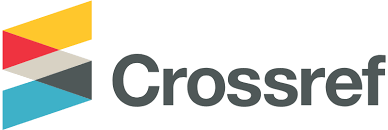INNOVATION AMBIDEXTERITY MODEL IN STOCK ANALYSIS SERVICES MICRO BUSINESS IN INDONESIA
Abstrak
One of a kind from the micro business sector in Indonesia is micro stock analysis services business thatmanaged by stock analysts who provide positive predictive recommendations to their clients. During the pandemic outbreak, the stock analysis service business was experiencing problems due to the decline in prices and affect its performance. This problem led researchers to help micro stock analysis services business with knowing the most influencing factors of the innovation ambidexterity model. Data collection was carried out by conducting an initial survey from Indonesia professional investment manager as expert. The collected data were analyzed using the partial least square (PLS) method to determine most influencing factors of the innovation ambidexterity model. As a result, investment capability is the most is the most influential variable on innovation ambidexterity.
Kata Kunci
Teks Lengkap:
PDFReferensi
A. Shibia & D. Barako. (2017) "Determinants of micro and small enterprises growth in Kenya." Journal of Small Business and Enterprise Development 24 (1): 105-118.
B. Barber & T. Odean. 2000 "Trading Is Hazardous to Your Wealth: The Common Stock Investment Performance of Individual Investors." The Journal of Finance 55(2): 773-805.
B. Barber, R. Lehavy, M. Maureen dan T. Brett. 2001 "Can Investors Profit from the Prophets? Security Analyst Recommendations and Stock Returns." The Journal of Finance 54 (2): 531- 563.
C. B. o. Statistics. (2017) "Ministry of Cooperatives and Small and Medium Enterprises of the Republic of Indonesia." Ministry of Cooperatives and Small and Medium Enterprises. [Online]. Available: http://www.depkop.go.id/data-umkm.
C. Maritan. (2001) "Capital Investment as Investing in Organizational Capabilities: An Empirically Grounded Process Model." Academy of Management Journal 44(3): 513-531.
C.R. Li, C.J. Lin dan C.P. Chu. (2008) "The Nature of Market Orientation and The Ambidexterity of Innovations." Management Decision 46 (7): 1002-1026.
D. Dunlap, R. Parente, J. Geleilate dan T. Marion. (2016) "Organizing for Innovation Ambidexterity in Emerging Markets: Taking Advantage of Supplier Involvement and Foreignness." Journal of Leadership & Organizational Studies 23 (2): 175-190.
D. Shen dan W. Zhang. (2020) "StayatHome Stocks Versus GoOutside Stocks: The Impacts of COVID-19 on The Chinese Stock Market." Asia-Pacific Financial Markets 31 Agustus 2020: 1-14.
Ghozali & Latan. (2015) "Partial Last Squares, Konsep Teknik dan Aplikasi Menggunakan Program SmartPLS 3.0." Badan Penerbit Universitas Diponegoro. Semarang.
H. o. R. o. I. Republic. (2008) "Laws of The Republic Indonesia Number 20 of 2008, Micro Small and Medium Enterprise." House of Representative of Indonesia Republic. Jakarta.
J. Morgan dan P. Stocken. (2003) "An analysis of stock recommendations." RAND Journal of Economics 34 (1): 183-203.
P. Soto-Acosta, S. Popa dan I. Martinez-Conesa. (2018) "Information Technology, Knowledge Management and Environmental Dynamism as Drivers of Innovation Ambidexterity: a Study in SMEs." Journal of Knowledge Management 22 (4): 824-829.
S. Haryono. (2017) "Metode SEM untuk Penelitian Manajemen dengan AMOS Lisrel PLS." Penerbit Luxima Metro Media Cetakan 1. Jakarta.
T. Tambunan. (2011) "Development of Micro, Small and Medium Enterprises and Their Constraint." Gadjah Mada International Journal of Business 13 (1): 21-43.
T. Tambunan. (2019) "Recent evidence of the development of micro, small and medium enterprise in Indonesia." Journal of Global Entrepreneurship Research 9(18): 1-15.
Y. Liu dan T. Mantecon. (2016) "Is Sustainable Competitive Advantage an Advantage for Stock Investors?" The Quarterly Review of Economics and Finance 11 April 2016: 1-53.
Z.-L. He. (2004) "Exploration vs Exploitation: An Empirical Test of The Ambidexterity Hypothesis." Organization Science 15 (4): 481-494.
DOI: https://doi.org/10.36441/seoi.v4i2.1186
Article Metrics
Abstrak views : 138 times
PDF views : 130 times
Dimension Citation Metrics
Refbacks
- Saat ini tidak ada refbacks.
Copyright (c) 2022 Sustainable Environmental and Optimizing Industry Journal

This work is licensed under a Creative Commons Attribution 4.0 International License.
Article Metrics
Abstrak views : 138 timesPDF views : 130 times
Dimension Citation Metrics
Refbacks
- Saat ini tidak ada refbacks.
Copyright (c) 2022 Sustainable Environmental and Optimizing Industry Journal

This work is licensed under a Creative Commons Attribution 4.0 International License.
Refbacks
- Saat ini tidak ada refbacks.
Copyright (c) 2022 Sustainable Environmental and Optimizing Industry Journal

This work is licensed under a Creative Commons Attribution 4.0 International License.
Sustainable Environmental and Optimizing Industry Journal Terindeks di:
 Ciptaan disebarluaskan di bawah Lisensi Creative Commons Atribusi 4.0 Internasional.
Ciptaan disebarluaskan di bawah Lisensi Creative Commons Atribusi 4.0 Internasional.






